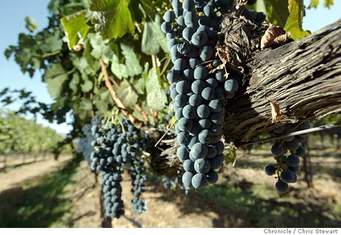Chemical-Free Agriculture







Chemical-Free Agriculture
Even if we assume that agrichemicals are safe, they are frequently used in ways other than those expressly indicated. For instance, in the early 1990s a survey of foods in the United Kingdom found that lettuces contained many times the allowable limit of chemicals, indicating that they had been sprayed just before harvest, although manufacturers recommendations suggested that spraying be ceased at least seven to ten days prior to harvest.
The chemicals did not have any time to leach out of the sand were being consumed in nice healthy salads. Unpeeled carrots were also a danger for the same reason. Peeling the carrot was shown to remove the majority of the residual chemicals and thus render them fit for human consumption. There is no way to point the finger of blame, since farmers frequently do not understand the full implications of agrichemicals on foodstuffs and health, while manufacturers may not do enough to advertise the possible dangers, and the governments do nothing but talk.
In his book Seeds of Change: The Living Treasure, Kenny Ausubel states, "Eighty percent of the known health risks come from thirteen pesticides on fifteen crops and products. Of greatest concern are tomatoes, beef, potatoes, oranges, lettuce, apples, peaches, pork, wheat, soybeans, , carrots, chicken, corn, and grapes. Broccoli, whose crucial health benefits are well documented, is treated with fifteen seperate chemicals and it can't be peeled. Apples can have up to a hundred different pesticides on them, seventy on bell peppers and a hundred on tomatoes."
We know from clinical analyses that plant material grown under modern chemical-farming conditions retain chemicals. When distilled, plant material components are extracted and condensed, and therefore the chemical residue becomes concentrated. What may be acceptable levels in a plant could easily become highly unacceptable levels when concentrated in essential oils or hydrosols.
The Canadian Ministry of Agriculture and a number of universities are now working jointly on studies assessing the effects of organic versus conventional farming. In a paper titled "Effects of Organic and Conventional Production Systems on Yield and Active Ingredient Concentration of Medicinal Plants,"researchers at Laval University "examined the influence of three organic systems and one conventional production system on dry matter yield and active ingredient concentrations.
"using thyme,Thymus Vulgaris:horehound, Marrubium vulgare; and German chamomile, matricaria recutita, "preliminary results showed that dry matter yield was higher with the conventional production system for all species and active ingredient concentration was higher in the organic system for thyme and horehound. Higher active ingredient concentration in these two species was btained in the organic-biodynamic system.
As the issue of standardized extracts and " active ingredients" becomes critical to the main stream scientific acceptance of botanical products, it is most satisfying to note that organic and boidynamic systems can produce more of what we want from a plant than chemical farming can. Quality, not quantity, is what we get from organics.
Then there is the issue of environmental effects of conventional agriculture. The earth is already very polluted; we know that all too well. The air, the water, the soil, from the artic to the Antarctic, even out in the middle of the oceans, is polluted. These contaminants are affecting our health both directly and in directly.
The rise in environmental sensitivities, asthma, allergies, eczema, psoriasis, chronic fatigue, colitis,and even cancer is being researched for possible links to pollutants. Pollution is killing us, and we cannot expect to use conventionally farmed products full of these chemicals if we wish to benefit our health. So be nice to yourself and the planet: buy organic.
Reference: Hydrosols The Next Aromatherapy: Suzanne Catty
Certified Organic or Biodynamic Agriculture








Certified Organic or Biodynamic Agriculture
Ideally, certified organic plant material should be used in the making of hydrosols and oils. A second choice would be chemical-free plant material, sometimes called noncertified organic. Noncertified organic is becoming more widely available as farmers move toward organic certification but have not been chemical-free long enough to become certified, a process that takes anywhere from three to seven years, depending on the country.
There are now many recognized and respected organic certification organizations around, the world, and they have strict guidelines that must be met before they will give out their seal of approval. Any legitimate dealer who claims to have certified organic products will provide the name of his or her certification agency and can usually provide copies of his or her certificates on request.
Most of the organic growers in Europe are certified by an independent body called Ecocert, but there are also soil associations in most countries and some government agencies that certify organic products. the requirements for certification are many.The soil where the plant material is grown must be tested and confirmed to be free of chemical applications for a special number of years (this differs from country to country and agency to agency). Seeds must come from organically cultivated plants and must not be treated with fungicides, pesticides, growth hormones, or other chemicals;
In some organisations seeds from non-organically grown but chemical -free sources are permitted. Cultivation of the plants from the moment of seed germination must be free of synthetic or chemical applications, and fertilizers must be natural composts or manures from (ideally ) organically raised animals. many distillers use the "muka", or waste from the distillation as fertilizer, creating a natural cycle and returning to the earth that which was taken out.
Weeding which is achieved on most farms on most farms by the use of herbicides and weed killers, must instead be undertaken by hand and by the use of mulch. Plastic and fibre mulching sheets have been developed for just this purpose, and interesting discoveries about plant behaviour have come from the use of these mulch sheets. Tomatoes, it appears, are highly competitive plants , and by using red mulch sheets under the plants , growers can use the tomatoes' competitiveness to promote the production of more fruit.
So you can see that not only is organic farming labor intensive and complex but the certification of these methods is also extremely difficult. Farmers pay a lot of money to receive their certificate; it is the only way that certification organizations like Ecocert, Demeter, and others can afford to operate.If the process did not pay for itself, certification agencies would have to turn to corporate or government financing, which might influence the process or criteria. Again, the cost of certification must be factored into the price of the final products.
There are also associations like Demeter, that certify biodynamically grown plant material. The biodynamic growing process goes one step beyond organic growing in that every aspect of cultivation, from germination and planting to weeding, composting, mulching, and harvesting, it is done in accordance with the natural rhythms of earth the planets and the plants themselves. farmers play music too the crops and talk to them to promote growth and, of course, ask permission before harvest.
in the days before artifical fertilizers, herbicides, and pesticides, all plant material was either harvested from the wild or grown organically. It made sense to follow the cycles of the moon, the seasons, the rains, the movement of animals and peoples. In ancient Egypt the flooding of the Nile was part of the very fabric of life, and even the pharaoh's power ws judged on the abundance of the yearly flood. So biodynamics include the rhythms of human beings as well.
However, with the advent of modern agricultural techniques and the proliferation of chemical treatments for every aspect of plant production. organic and biodynamic practice all but vanished. Happily, for the last thirty years or so, movements in Europe, and Australia, have encouraged organic growing practices and the biodynamic cultivation of plants for food and health, and thousands of farmers in North America, both large-and-small-scale, are also returning to these time tested methods. In late June 2000, the U.S.Department of Agriculture closed its public comment period before announcing national standards and definitions for organic growing throughout the United States.
A giant leap for humankind!
Although the use of chemicals on plant material designated for human consumption is regulated to some degree, many chemicals were approved decades ago. The Food and Drug Administration (FDA) in the United States admits that if applications for some of these chemicals were filed today, they would be turned down. But new chemicals are approved every year, and it is often only with twenty-twenty vision of hindsight that we see problems of toxicity to the environment and ourselves.
Fortunately, some of the most destructive chemicals have been removed from the market , and we are a little more careful these days. DDT is a case in point. Banned in 1978 in the United States, DDT was originally considered safe, although we now know how incredibly toxic it is to both humans and the environment. However, a recent major infestation is eastern Canadian conifers prompted some to suggest that DDT be brought back. Fortunately the idea was rejected.
Reference: Hydrosols The Next Aromatherapy: Suzanne catty
Kurt Schnaubelt
Kurt Schnaubelt
Enter Kurt Schnaubelt's approach to life, the universe, and aromatherapy appeals to me. His excellent conferences bring together presenters from many fields and modalities, creating a bigger picture for aromatherapy within the context of holistic health. During his intensive course he explained the science of aromatherapy in an accessible way, never getting stuck in rigid paradigms.
Schanubelt lets nature and the intention of the products play their part, promoting the view that flexibility is key when dealing with aromatics.As a chemist he knows better than most the importance of working from an informed psition, and as a humanist he honors all of life and what it means to be alive. As he says in his 1999 book Medical Aromatherapy "It is the most blatant admission of hubris, that scientific proof amounts to the act of creation."
With more science under my belt I finally understood why bay leaf hydrosol clears swollen lymph nodes in breast tissue and why green myrtle hydrosol can be put into the eyes. The connection between homeopathy and hydrosols also became clearer.
Hydrosols can be seen as microdoses of oil, and if used in the manner prescribed by Grosjean and others, this microdose is further diluted in water. In Homeopathy , the more you dilute, the stronger the remedy. When you drink a litre of water containing hydrosol over the course of a day, you are taking multiple microdoses of you "remedy".
In homeopathy, multiple doses at frequent intervals are the most powerful and potent way to take remedies. And as Schnaubelt points out, a microdose can achieve the same thing as a megadose in the appropriate situation.There are many people and hundreds of events that have influenced my learning path and direction in the world of aromatherapy, but in the context of hydrosols, my encounters with Grosjean, Penoel, Franchomme, and Schnaubelt have most dramatically altered my thinking.
Reference: Hydrosols The next Aromatherapy: Suzanne Catty
Franchomme and Penoel









Franchomme and Penoel
From Grosjean I went to Piere Franchomme and Daniel Penoel or, rather, to their book L'aromatherapie exactemente. I had attended a workshop with Franchomme in 1996 and being overwhelmed by the intensely medical nature of the presentation. If this is what the French called aromatherapy , what an earth was I doing. Undaunted, I plowed through the heavily scientific tome, devouring every shred of information on hydrosol and pH readings, the significance of which I came to appreciate only much later . But at this time my brother gave me a pH meter, and Franchomme and Penoel listed some data. So I started taking readings too. It just seemed like the thing to do.
Now years later I know that even those two academic gentlemen recognize the vibrational aspects of aromatherapy and the link with the plant and human worlds. Dr. Phenol, in particular, has pursued this area of study, as evidenced in his later work.
After L'aromatherapie exactemente I had no choice but to pursue my own experiments . My faily, my friends, my dogs, and virtually every single client began to recieve hydrosols as part of their aromatherapy treatmenst. My fridge was filled with bottles from top to bottom.
Hydrosols went into every glass of water, on every pore of the skin,in most body orifices and in all my recipes, and they were combined and blended in the same way that I worked with oils. By early 1997 I had fairly a clear understanding of the properties of my original twenty, plus another handful, and was beginning to feel that I needed a new approach and some additional science to back up my experiments.
Reference: Hydrosols The Next Aromatherapy: Suzanne Catty
Articles - Most Read
- Home
- What are Hydrosols
- What are Hydrosols-2
- The Monographs
- How to Make a Hydrosol
- Table of Common Latin Names and pH Values - F - O
- Distilled or Extracted Specifically For Therapeutic Use - 3
- Kurt Schnaubelt
- What isn't a Hydrosol?
- Table of Common Latin Names and pH Values - P - S
- Wholly Water!
- Blue Babies
- Supply and Demands
- Mature Skin
- Recipes Alpha F
- Hydrosols In The Marketplace
- Chemicals: Friends or Foes?
- Hemorrhoids
- Nelly GrosJean
- Water as Medicine
- The Educated Consumer
- Genitically Modified Plants
- Influences
- Water Quality
Articles-latest
- Daucus carota/Wild Carrot Seed - pH 3.8-4.0
- Cupressus sempervirens/ Cypress-pH3.5-3.7
- Coriandrum sativum/Coriander Herb-and-Seed
- Comptonia peregrinal/Sweet Fern- pH 3.8
- Citrus clementine (fe) Clementine Petitgrain- pH 4.3-4.4
- Citrus aurantium var. amara (flos) /Neroli Orange Blossom-pH3.8-4.5
- Cistus ladaniferus/Rock Rose-pH 2.9-3.1
- Cinnamomum zeylanicum (ec) Cinnamon Bark-pH3.3
- Chamaemelum nobile/Roman Chamomile - pH 3.0-3,3
- Centaurea cyanus/Cornflower/Bachelor's Button-pH 4.7-5.0
- Cedrus atlantical/Cedarwood/Atlas Cedar-pH 4.1- 4.2
- Hydrosols -The PH - Anomalies
- Hydrosols- Establishing Shelf Life and Stability
- Boswellia carterii/FRANKINCENSE
- Asarum canadense/ Wild Ginger/Canadian Ginger
- Artemesia vulgaris / Artemesia
- ARTEMESIA DRACUNCULUS - TARRAGON
- Angelica archangelica / Angelica Root - Hydrosols
- The Key, or More Correctly, the pH - 2 - Hydrosols
- The Key, or More Correctly, the pH-Hydrosols
- The Hard pHacts - Hydrosols
- Calamus Root/Sweet Flag - ACORUS CALAMUS
- Yarrow - Achillea millefolium - Hydrosols
- Balsam Fir - Abies balsamea - Hydrosols


